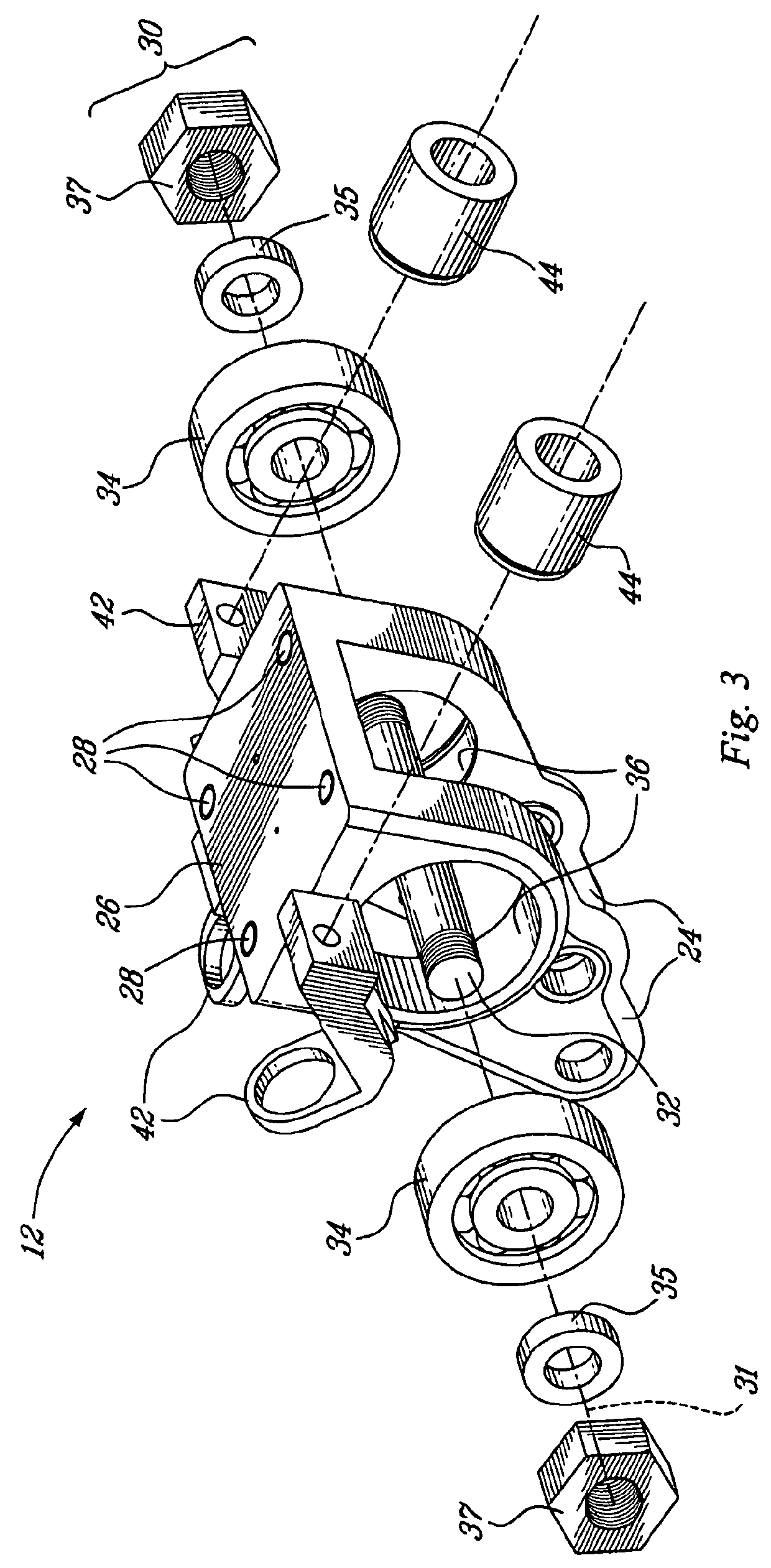Actuated prosthesis for amputees
a technology for amputees and prostheses, applied in the field of amputee actuated prostheses, can solve the problems of difficult task of prosthesis giving to amputees, difficult task for leg prosthesis, and limited conventional leg prosthesis
- Summary
- Abstract
- Description
- Claims
- Application Information
AI Technical Summary
Benefits of technology
Problems solved by technology
Method used
Image
Examples
example
Calculation for the Optimal Angle
[0081]One can assume the following technical specifications:
[0082]a geometrical volume corresponding to the anthropometrical volume of a natural shank of an individual having a weight of 70 kg and a height of 170 cm;
[0083]a maximal distance r set at 0.055 m, that is r<0.055 m;
[0084]a minimal and a maximal length LT set at 0.3 m and 0.4 m respectively, that is 0.3 mT<0.4 m; and
[0085]a minimal and a maximal distance dT set at −0.015 m and +0.015 m, that is −0.015 mT<+0.015 m.
[0086]The geometrical model can be defined with the following equations:
[0087]β=π-θfix-α-θKEquation1LA=LT2+dT2Equation2α=arctan(dTLT)Equation3L2=LA2+r2-2·LAr·cosβEquation4br=r·LA·sinβLA2+r2-2·LA·r·cosβEquation5
[0088]where
[0089]θK Knee angle, ∠DOA
[0090]r Distance between the center of rotation “O” of the knee member (12) and the attachment point of the actuator (16) on the knee member (12)
θfix Angle between r and the stump's center axis, ∠EOC
[0091]LA Distance betw...
PUM
 Login to View More
Login to View More Abstract
Description
Claims
Application Information
 Login to View More
Login to View More - R&D
- Intellectual Property
- Life Sciences
- Materials
- Tech Scout
- Unparalleled Data Quality
- Higher Quality Content
- 60% Fewer Hallucinations
Browse by: Latest US Patents, China's latest patents, Technical Efficacy Thesaurus, Application Domain, Technology Topic, Popular Technical Reports.
© 2025 PatSnap. All rights reserved.Legal|Privacy policy|Modern Slavery Act Transparency Statement|Sitemap|About US| Contact US: help@patsnap.com



